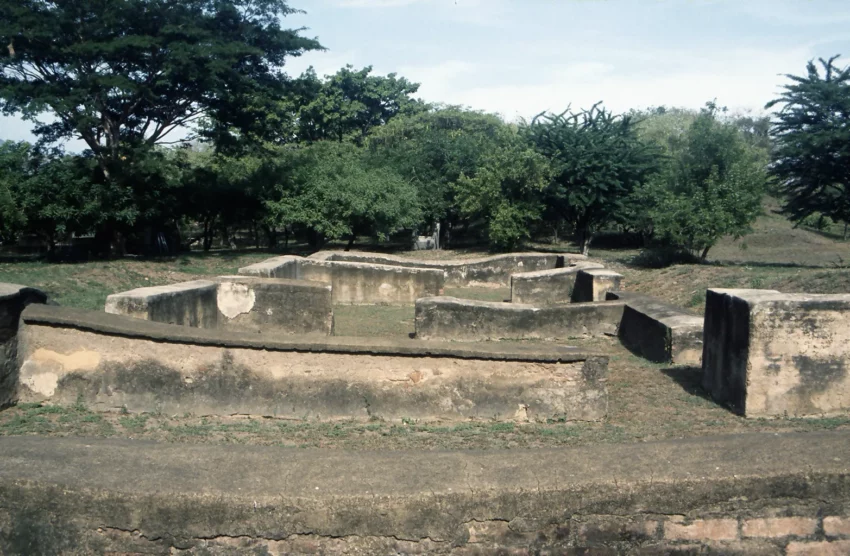León Viejo’s ruins date back to the early Spanish conquest and colonization. Founded in 1524 by Francisco Hernández de Córdoba, it’s a site of significant historical importance. The city was abandoned in the early 17th century after a series of earthquakes. Rediscovered in the 1960s, it offers a unique glimpse into the lives of the Spanish conquistadors and the indigenous peoples of Nicaragua.
Get your dose of History via Email
Historical Background of León Viejo
León Viejo’s story begins with its founding by Francisco Hernández de Córdoba in 1524. It served as a colonial capital in Nicaragua. The city thrived for nearly a century before being abandoned due to recurrent earthquakes. Rediscovery of the site occurred in the 1960s, sparking interest in its history and preservation. The Spanish built León Viejo, and it later became home to indigenous peoples and Spanish settlers. It witnessed significant events, including conflicts and governance changes, shaping Nicaraguan history.
Archaeologists uncovered León Viejo, revealing its past. Excavations began in earnest in the 1990s. The site’s discovery was pivotal, as it shed light on colonial urban planning and architecture. The ruins stand as a silent witness to the city’s once-bustling life. They offer insights into the early colonial period in Central America. The city’s layout and structures reflect Spanish influence merged with local traditions.
León Viejo’s builders were Spanish colonists, aiming to establish a stronghold in the New World. The city’s design followed Spanish urban planning principles. It featured a central plaza, government buildings, and a church. The city later housed a mix of Spanish settlers and indigenous people. This blend of cultures is evident in the archaeological remains.
León Viejo played a role in historical events, including resistance against Spanish rule. It was the scene of power struggles and political intrigue. The city’s abandonment in the early 17th century marked the end of an era. However, its ruins continue to be a source of historical knowledge. They provide a window into the challenges and triumphs of its inhabitants.
The site’s significance extends beyond its historical events. It represents the broader narrative of Spanish colonization. León Viejo’s history is a microcosm of the colonial experience in Latin America. It highlights the interactions between European settlers and indigenous populations. The city’s abandonment and rediscovery add layers to its historical narrative, making it a fascinating subject for study.
About León Viejo
León Viejo’s ruins offer a snapshot of 16th-century Spanish colonial architecture. The city’s layout was typical of Spanish colonial towns, with a central plaza surrounded by important buildings. The materials used in construction were local to the region. This included volcanic stone, which has helped preserve the site over centuries.
The city’s architecture reflects Spanish colonial styles adapted to the New World. The ruins of the church, for example, showcase a blend of Renaissance and indigenous influences. The use of local materials and techniques in construction is evident throughout the site. This gives León Viejo a unique place in the history of colonial architecture.
One of the most significant structures at León Viejo is the church. Its remains are among the best-preserved at the site. The church’s design and construction methods were a direct import from Spain. Yet, they were modified to suit the local environment and resources. This adaptation is a key feature of the site’s architectural significance.
Other notable structures include the fortifications and government buildings. These buildings were central to the city’s function as a colonial capital. They were built to assert Spanish authority and control over the region. The fortifications, in particular, were a response to the threats posed by pirates and indigenous resistance.
León Viejo’s construction methods and materials have been a focus of archaeological study. The use of volcanic stone not only provided durability but also offers clues to the city’s downfall. The earthquakes that led to the city’s abandonment were likely exacerbated by the region’s volcanic activity. This geological context is an important aspect of understanding the site’s history.
Theories and Interpretations
León Viejo has been the subject of various theories and interpretations. Its use as a colonial capital is well-documented. However, the daily lives of its inhabitants are less understood. Archaeologists have used artifacts and building remains to piece together a picture of life in the city.
Some mysteries surround León Viejo, particularly regarding its abandonment. While earthquakes are the official reason, some speculate that political or economic factors played a role. The exact causes remain a topic of debate among historians and archaeologists.
The site’s interpretation has required matching archaeological findings with historical records. This has been challenging due to the limited written documentation from the period. As a result, much of León Viejo’s story is reconstructed from the physical evidence left behind.
Dating of the site has employed various methods, including radiocarbon dating and stratigraphy. These techniques have helped establish a timeline for the city’s occupation and abandonment. They have also aided in understanding the sequence of construction and use of different areas within the site.
Theories about León Viejo also extend to its role in the broader context of Spanish colonization. Some view the city as a symbol of Spanish imperialism. Others see it as a site of cultural exchange between Europeans and indigenous peoples. These interpretations reflect the complex legacy of León Viejo in Central American history.
At a glance
Country: Nicaragua
Civilization: Spanish colonial
Age: Founded in 1524 AD

